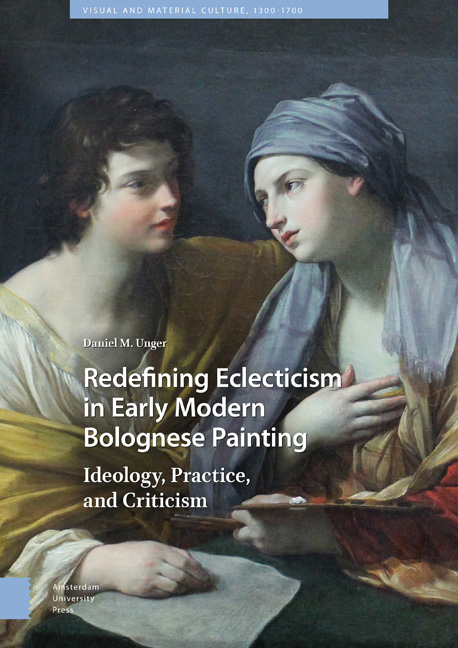Summary
In a revealing passage regarding Ludovico Carracci's St. Michael and St. George altarpiece in the church of Santi Gregorio e Siro in Bologna (Plate 1), Count Carlo Cesare Malvasia describes the painting in the following words:
Ludovico had a marvelous and unique ability to re-create the manner of whatever master he chose to imitate, and because he practiced so many styles, one sometimes despairs of being able to identify a work as being by his hand. To view the Saint George altarpiece in the church of San Gregorio, and to consider the three styles, each one so different from the other, seen in the saint, the maiden, and the angels in the upper section, is enough to drive one crazy.
In this short passage, Malvasia, the seventeenth-century biographer of the Bolognese school of painting, demonstrates his enthusiasm toward one of Ludovico's Bolognese altarpieces by emphasizing the painter's skills as a master of stylistic variety. Carracci, as his biographer tells us, possessed an ability to create a single work of art that combined three different styles. According to Malvasia, this stylistic diversity is discernible in the two main protagonists in the lower section of the altarpiece, the maiden and the saint, as well as in the three distinct yet combined compositions in the upper section.
Count Carlo Cesare Malvasia (1616–1693), a native of Bologna and the scion of a respectable local family, wrote what is still acknowledged today as the most comprehensive and detailed account of the development of painting in Bologna between the fourteenth and seventeenth centuries. At first glance, his description may seem surprising to contemporary twenty-first-century viewers accustomed to an ongoing flood of media images. Such viewers might pass through the chapel without noticing anything special about it, and might find it difficult to detect the subtle stylistic variations noted by Malvasia. Yet attention to these variations, which Malvasia described as mind-blowing to the point of driving him mad (impazzire), provides a glimpse into seventeenth-century sensibilities that may shed new light on the visual experience of Malvasia's contemporaries. The relative dearth of images in the seventeenth century may have been one of the reasons that seventeenth-century art lovers were meticulous in their observations, as made evident in the passage by Malvasia.
- Type
- Chapter
- Information
- Redefining Eclecticism in Early Modern Bolognese PaintingIdeology, Practice, and Criticism, pp. 17 - 32Publisher: Amsterdam University PressPrint publication year: 2019



